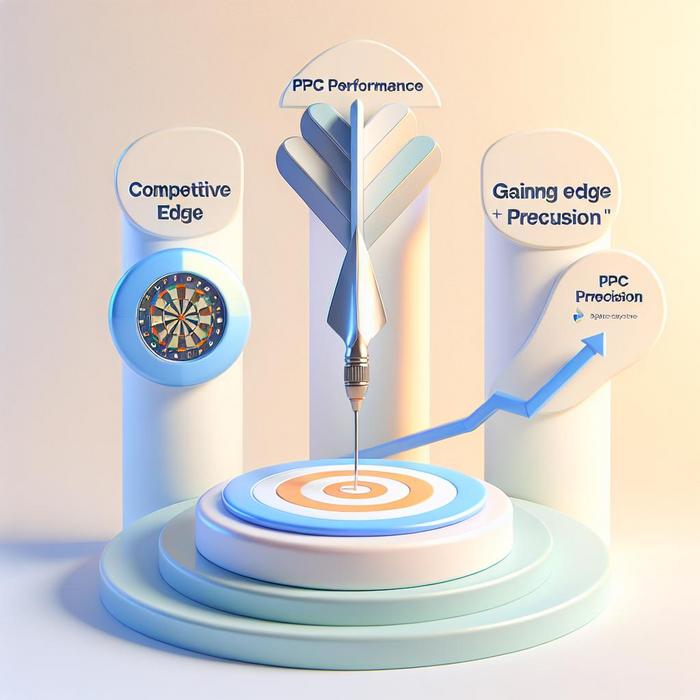Maximizing Ad Performance in the Digital Realm
The key to successful results lies in the ability to create strategic optimizations. The focus here is not just on engaging audiences, but on targeting the right audience with the right message at the right time – all while maximizing return on investment.
TikTok Vs Google: A Comparative Study in Ad Performance
There exists a significant contrast when it comes to ad performance between platforms like TikTok and Google. Being a video-centric platform, TikTok opens up a stream of opportunities to create visually engaging content, thus leading to higher brand recognition. Google, on the other hand, drives performance through a comprehensive suite of tools, including search, display, and video ads.
Understanding Optimization Tactics
Ad optimization takes into account the aggregate value of all conversions instead of focusing on the number alone. This approach enables advertisers to optimize their bids based on the potential worth of each conversion. The strategy is designed to maximize the total conversion value of your campaign within your specified budget.
Meta: An Emerging Advertising Frontier
Meta, previously known as Facebook, stands as an essential platform for implementing optimization tactics. With a massive user base, Meta offers advertisers the ability to refine and customize their audience like never before. Leveraging aspects such as user behavior, demographics, and interests allow for ads to be displayed to the most relevant audiences, increasing the chance for meaningful engagement.
Brand Awareness: The Ultimate Goal
Brand awareness stands as the prime focus in these strategies. It is not just about getting your ad in front of an audience; it’s about creating lasting impressions that foster recognition and loyalty. Highly optimized ads that align with the target audience’s interests can help transform brand awareness into brand preference.
The Role of PPC in Brand Awareness
Pay-Per-Click (PPC) campaigns can be a significant driver for brand awareness. It’s a cost-effective way to reach a larger audience, and with the right targeting, it can lead to substantial brand exposure. But as we delve deeper into the world of PPC, it’s clear that optimization strategies can be the deciding factor between success and missed opportunities.
Optimizing PPC with Advanced Techniques
Incorporating modern optimization tactics can enhance the results of PPC campaigns, and one of the most effective ways to achieve this is through advanced techniques. With these tools, advertisers can adopt a highly strategic approach, adjusting bids for different audiences based on a myriad of factors. By understanding the value of each conversion, advertisers can make calculated decisions on how much to bid – ensuring that investments yield the highest possible returns.
Discovering New Revenue Streams through Optimized Ads
Building an optimized ad strategy can also lead to the discovery of new revenue streams. By fine-tuning ad campaigns to target high-value audiences, businesses can unlock untapped potential and significantly increase their revenue.
Achieving Customer Satisfaction through Innovative Ads
Lastly, it’s essential to remember that the end goal of all advertising efforts is customer satisfaction. An ad that resonates with an audience and meets their needs is the most successful kind. By leveraging optimization strategies, advertisements can be more than just promotional tools – they can become platforms for fostering meaningful, satisfying connections with customers.
Comparative Analysis: Meta vs. Google for Online Ads
One cannot ignore the distinct advantages that brand come across while advertising through Meta versus Google. In terms of sheer user base size, Meta offers an unprecedented potential for customer reach. Meanwhile, Google displays formidable strengths in terms of search engine marketing, leveraging algorithms to target ads towards active searchers.
Mainstreaming Conversion Optimization
The optimization strategy of advertising focuses more on accentuating total conversions rather than mere number count. Bids are calibrated according to each conversion’s potential. This model ensures that businesses get the maximum conversion value within the constraints of the assigned budget.
TikTok: A Dynamic Force in Digital Advertising
TikTok has risen as a force to be reckoned with, particularly for its consumer interaction capabilities. Its video-dominant platform facilitates vivid brand content, thus bolstering user engagement and brand out-reach.
Conversion Optimization: The Fulcrum of PPC Strategy
PPC campaigns, by design, can offer accelerated brand recognition, but the true potential is unlocked with the inclusion of ad optimization strategy. Optimized PPC campaigns are more targeted and thus offer more significant returns on ad spend (ROAS).
Leveraging Tech for Campaign Performance Maximization
The upper hand in current marketing scenarios rests with those who can efficiently utilize evolving tech to their command. Embracing advanced methodologies in advertising, like machine learning, can help discern valuable insights, enabling data-driven decisions for bid adjustments in various marketing campaigns. This learned approach ensures optimum ROAS.
Creating Opportunities with Enhanced Ad Targeting
Diving into enhanced ad targeting, businesses uncover unexploited possibilities of generating more revenue. With the application of sophisticated algorithms, campaigns achieve the capability to sweep into uncharted territories, unearthing high-value customers and offering higher conversion rates.
Amazon: An Untapped Advertising Powerhouse
Amazon is arguably as influential as Google or Meta when it comes to online advertising. With an incredibly diverse and loyal customer base, marketers can take advantage of Amazon’s unparalleled reach to generate useful insights and increase conversion rates.
Understanding User-Interaction and Building Customer Trust
At the end of the day, the ultimate goal is to build customer trust. Building a strong brand-customer relationship requires understanding the needs, challenges, behavior, and preferences of target audiences. By monitoring these parameters carefully, advertisers can make informed decisions to create compelling and engaging content.
LinkedIn: Harnessing Professional Networks for Ads
LinkedIn focuses on different demographic subsets – professionals. While this narrows down the customer base, it also offers an exclusive opportunity to cater to a specific segment with focused content, enabling an efficient ad campaign.
The aforementioned strategies are centric towards providing platforms to effectively allocate advertising resources. Combined with steadfast monitoring of ongoing campaigns, the strategies offer a more reliable framework, streamlining ad performance for optimal outcomes to support corporate vision and objectives.











